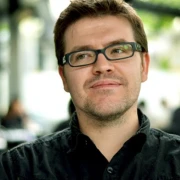
Dr. Liam Ward
Details
-
Department: School - Media & Communication
-
Campus: City Campus Australia
-
liam.ward2@rmit.edu.au
-
ORCID: 0000-0002-6494-9165
Open to
- Masters Research or PhD student supervision
About
Liam Ward is Lecturer in Media, engaged in creative practice, documentary fim-making, and with a developed focus on aspects of Australian labour history, socialist politcs and racism. His feature length doco Do Nothing and Do It Well explores radical Chinese labour in Australian history, and has screened at the Melbourne Documentary Film Festival (2021), the Ogeechee International History Film Festival (2021), and was awarded 'Best in Festival' at the Canadian Labour International Film Festival (2021).
Supervisor projects
- Exploring Documentary from the Filmmaker's Perspective: A Relational Approach to Locating a Meeting Place of Practice and Theory
- 27 Jun 2018


